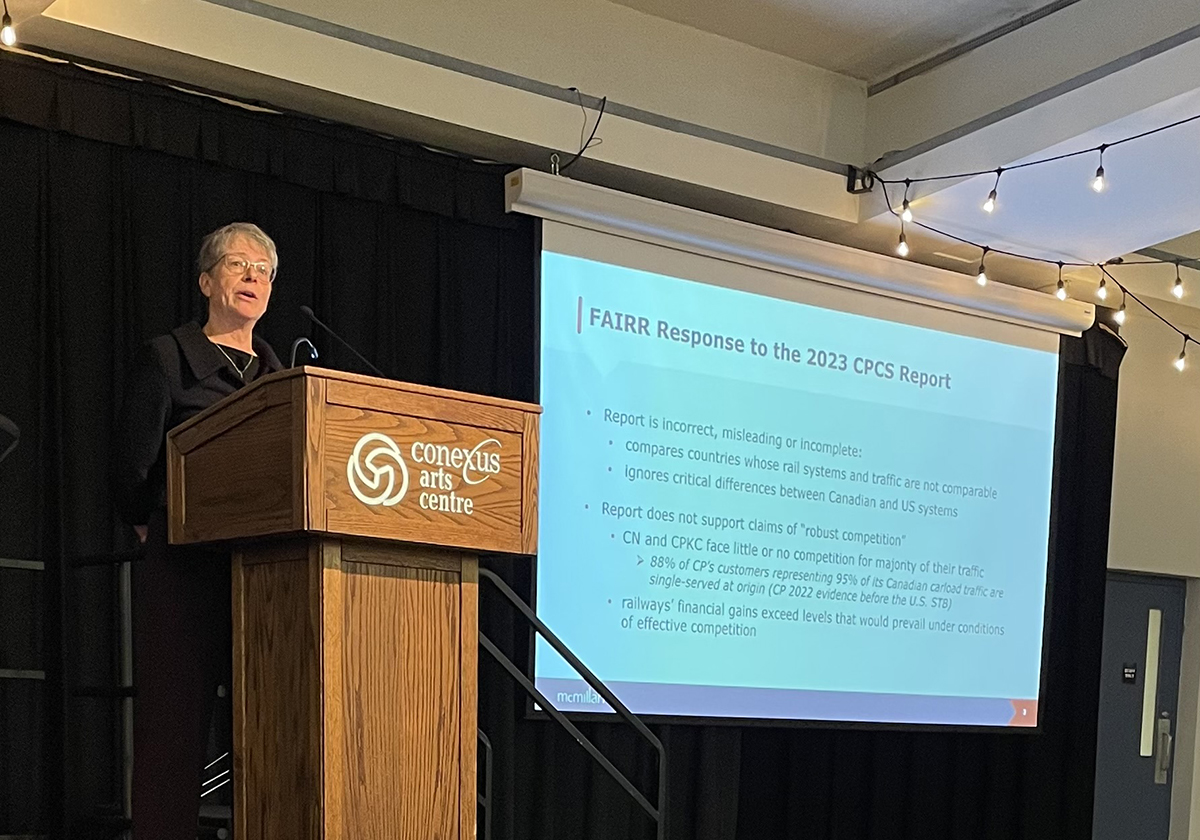Saskatchewan farmers are told that a study claiming Canadian freight rates are among the lowest in the world is wrong
REGINA — A 2023 report claiming Canada has among the lowest rail freight rates in the world is inaccurate and misleading, said a lawyer who worked on a counter report.
The Railway Association of Canada has relied on the first report to tout low rates.
Chief executive officer Marc Brazeau again told the standing agriculture committee last week that Canadian rates are 11 per cent lower than in the United States and significantly lower than several European countries, Australia, Japan and India.
Read Also

Russian wheat exports start to pick up the pace
Russia has had a slow start for its 2025-26 wheat export program, but the pace is starting to pick up and that is a bearish factor for prices.
“Grain companies charge more to farmers to truck and elevate a tonne of grain than railways charge to move that same tonne 1,500 kilometres from the Prairies to tidewater,” he told the committee Dec. 5.
“A CPCS study found that the implied MRE rate for regulated Canadian grain is 29 per cent lower than the average Canadian freight rate.”
However, the second report, done by rail experts and lawyers at the McMillan firm and released earlier this year, pointed out flaws.
Lucia Stuhldreier, a McMillan partner in Vancouver, said the work done for the Coalition for the Factual Analysis of International Rail Rates doesn’t support the claims railways are making.
The coalition includes Pulse Canada, the Western Grain Elevator Association and the Canadian Canola Growers Association among other shippers.
She said the first report was gaining traction in Ottawa, and that raised concern among shippers who knew it wasn’t accurate.
“It’s an attractive shorthand way of saying all is well, we should be proud we’ve got the most efficient and inexpensive rail transportation in the world when, in fact, that is not true,” she said after a presentation to the Agricultural Producers Association of Saskatchewan’s annual meeting.
She said it’s impossible to do an apples-to-apples comparison because systems are so different around the world.
For example, cents per revenue tonne mile is commonly used to compare rates.
“What the CPCS report does not address is the fact that everybody who does work in this area knows that cents per revenue tonne mile tend to go down as distance increases,” she said.
“That is because the first mile and last mile, that’s where the railway does most of the work.”
Average hauls in Canada are far longer than those in Europe so the metric isn’t comparable. The rate will go down because of a concept called rate taper.
Stuhldreier said rates under the maximum revenue entitlement for grain were also examined. The CPCS report compares this traffic to all traffic in other jurisdictions, which is incorrect.
“It’s just not legitimate to compare very short hauls in countries like Germany and Japan to those in Canada,” added Ryan Gallagher of McMillan.
“The CPCS report ignores the relatively long trains that prevail in Canada versus short trains in other jurisdictions, That’s important because it takes the same crew to operate a short train versus a long train. The longer the train, the longer the average labour cost per tonne mile decreases.”
Canadian freight trains average about 121 cars per train compared to 30 to 40 cars in Europe, 25 grain cars in India or 80 in the United States.
Car size and weight are factors. Grain cars in Canada can carry 32 to 33 tonnes, compared to 20 to 23 tonnes in Europe. Gallagher also said unit trains for commodities are far more common in Canada.
Stuhldreier said the railways have been able to generate financial gains far above the levels one would expect if there was effective competition.
At the House agriculture committee last week, Canadian National Railway and Canadian Pacific Kansas City spoke against extended interswitching, a measure shippers want to help create competition.
“Under this pilot program ,Canadian shippers, particularly large grain companies, are incentivized to contract with U.S. railways because they receive a regulated, below market rate,” said Eric Harvey, CN’s general counsel for policy and legislative affairs.
He said all grain movement begins in a truck, which means farmers have choices about where to take their product and therefore which railway they will use. He said extended interswitching puts the railways on an uneven playing field without providing direct financial benefit to farmers and said the pilot should not continue past March 2025.
Nathan Cato, CPKC’s assistant vice-president of government affairs, said the argument for extended interswitching is invalid.
“Extended interswitching does not create one new competitive option,” he said.
Both railways said shippers have access to long haul interswitching of up to 1,200 kilometres.
CPKC suffers a loss of traffic, particularly in southern Alberta, where BNSF can access the Canadian market by virtue of the 160-km extended inters witch provision.
“Canadian law should not be tilted to favour an American rail carrier at the expense of Canada,” Cato said.
















